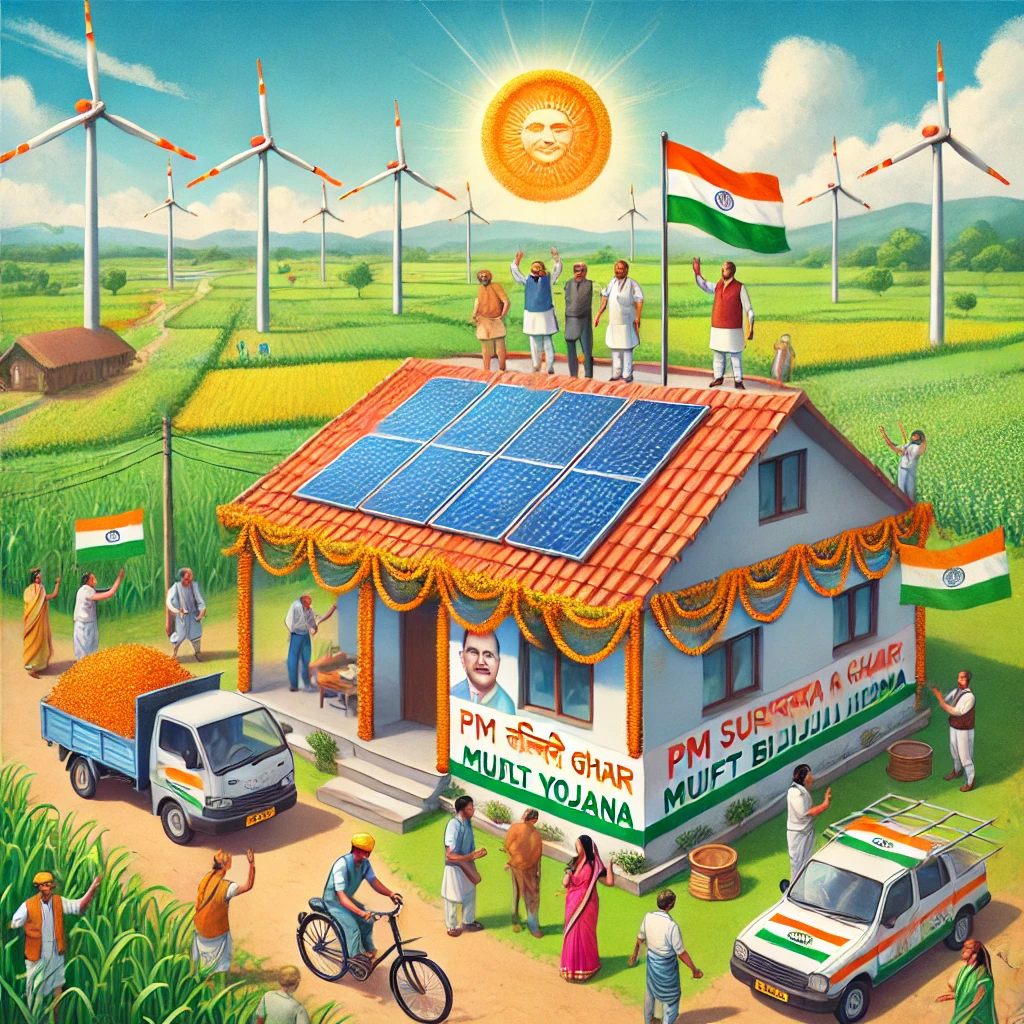- SSB-2, Pocket-C, Sector-14, Hisar (125001) Haryana
- [email protected]
Office Address
48, Geeta Colony, Nearby MG Resorts, Delhi-Sirsa (Hisar) Highway, Hisar, 125001
Phone Number
+91 96676 15300
+91 87080 15300
48, Geeta Colony, Nearby MG Resorts, Delhi-Sirsa (Hisar) Highway, Hisar, 125001
+91 96676 15300
+91 87080 15300

FAQ: PM Surya Ghar Muft Bijli Yojana & Subsidy
1. What is the PM Surya Ghar Muft Bijli Yojana?
The PM Surya Ghar Muft Bijli Yojana is a government initiative aimed at promoting the use of solar energy in households across India. Under this scheme, eligible households can install solar panels on their rooftops and generate free electricity while contributing to a greener and more sustainable environment.
2. Who is eligible for this scheme?
The eligibility criteria include:
•Indian citizens owning residential properties.
•Households with a suitable rooftop for solar panel installation.
•Priority may be given to rural and semi-urban households or those in areas with high electricity costs.
•Households in compliance with the guidelines provided by the local electricity board.
3. What are the benefits of the scheme?
•Free or subsidized electricity for households.
•Reduction in electricity bills.
•Contribution to renewable energy targets and reduced carbon footprint.
•Solar panels may also allow households to sell excess electricity back to the grid (in applicable areas).
4. What is the subsidy offered under this scheme?
The subsidy structure depends on the state and the size of the solar system installed. Typically:
•Up to 40% subsidy is provided for solar systems up to 3 kW.
•20% subsidy is offered for systems between 3 kW and 10 kW.
•Beyond 10 kW, subsidies may not apply for additional capacity, but incentives for net metering may be available.
5. How can I apply for the PM Surya Ghar Muft Bijli Yojana?
You can apply through:
1.The official government portal for renewable energy (e.g., MNRE or state-specific portals).
2.Local electricity boards or DISCOMs.
3.Registered solar vendors authorized under the scheme.
Ensure all required documents (property ownership, ID proof, electricity bill, etc.) are submitted during the application.
6. What documents are required to apply?
Commonly required documents include:
•Aadhaar Card or other government-issued ID.
•Proof of property ownership.
•Latest electricity bill.
•Passport-sized photographs.
•Bank details for subsidy transfer.
7. How does net metering work under this scheme?
Net metering allows households to send excess electricity generated by their solar panels back to the grid. You are credited for this electricity, which reduces your overall electricity bill or results in additional earnings (state policies vary).
8. Are there maintenance costs for the solar panels?
Maintenance is typically low for solar panels, but cleaning and servicing are required periodically to maintain efficiency. Some installation vendors offer free maintenance for the first few years as part of the package.
9. What is the average cost of installation after the subsidy?
The cost depends on the system size and subsidy amount:
•A 3 kW system may cost around ₹50,000–₹60,000 after subsidies.
•Larger systems (e.g., 10 kW) can cost ₹1.5 lakh–₹2 lakh post-subsidy.
10. Can commercial or industrial properties apply under this scheme?
No, this scheme is primarily for residential properties. Separate schemes are available for commercial or industrial properties.
11. How much electricity can I generate with a solar system?
The electricity generated depends on the system’s capacity and location:
•A 1 kW solar panel generates approximately 4–5 units per day.
•A 3 kW system can generate 120–150 units per month, sufficient for an average household’s needs.
12. How long does it take to install the solar system?
After approval, installation typically takes 1–2 weeks, depending on vendor availability and system size.
13. Are there any tax benefits under this scheme?
Yes, solar installations for residential use are exempt from Goods and Services Tax (GST). Additionally, you may benefit from other state-specific incentives.
14. Can I upgrade my solar system in the future?
Yes, you can upgrade your solar system by adding more panels or batteries as needed. However, subsidies for the additional capacity may not apply.
15. How can I track my application status?
You can track your application status via the official portal or by contacting your Vendor